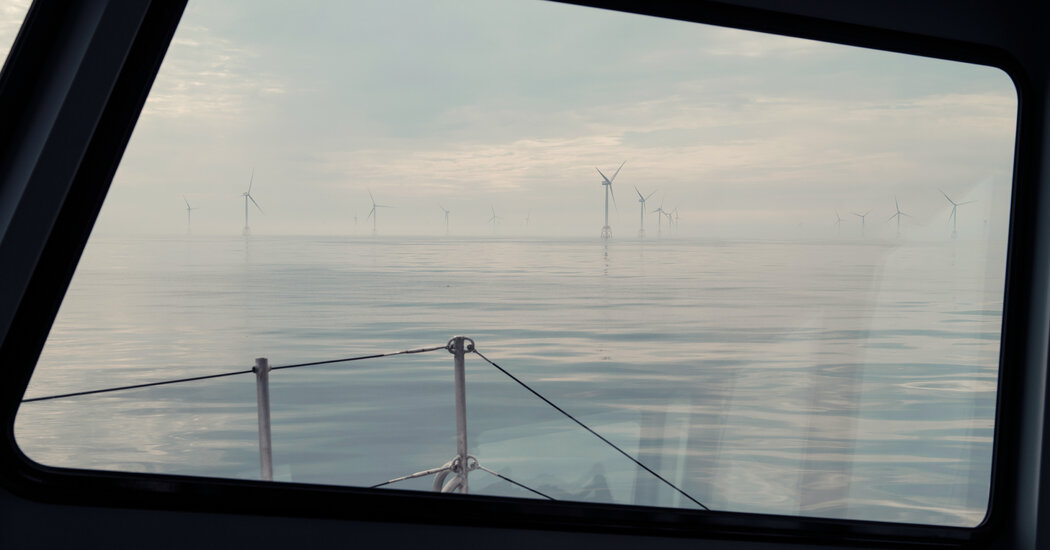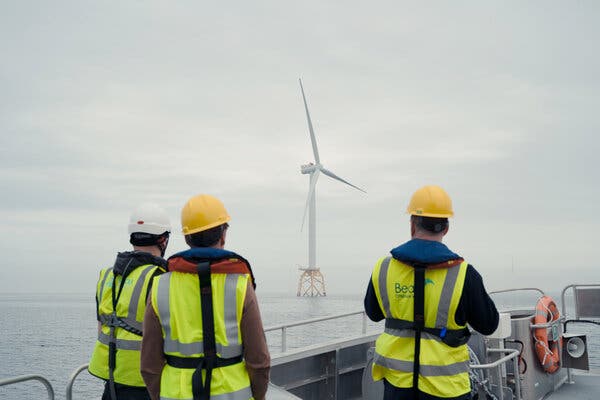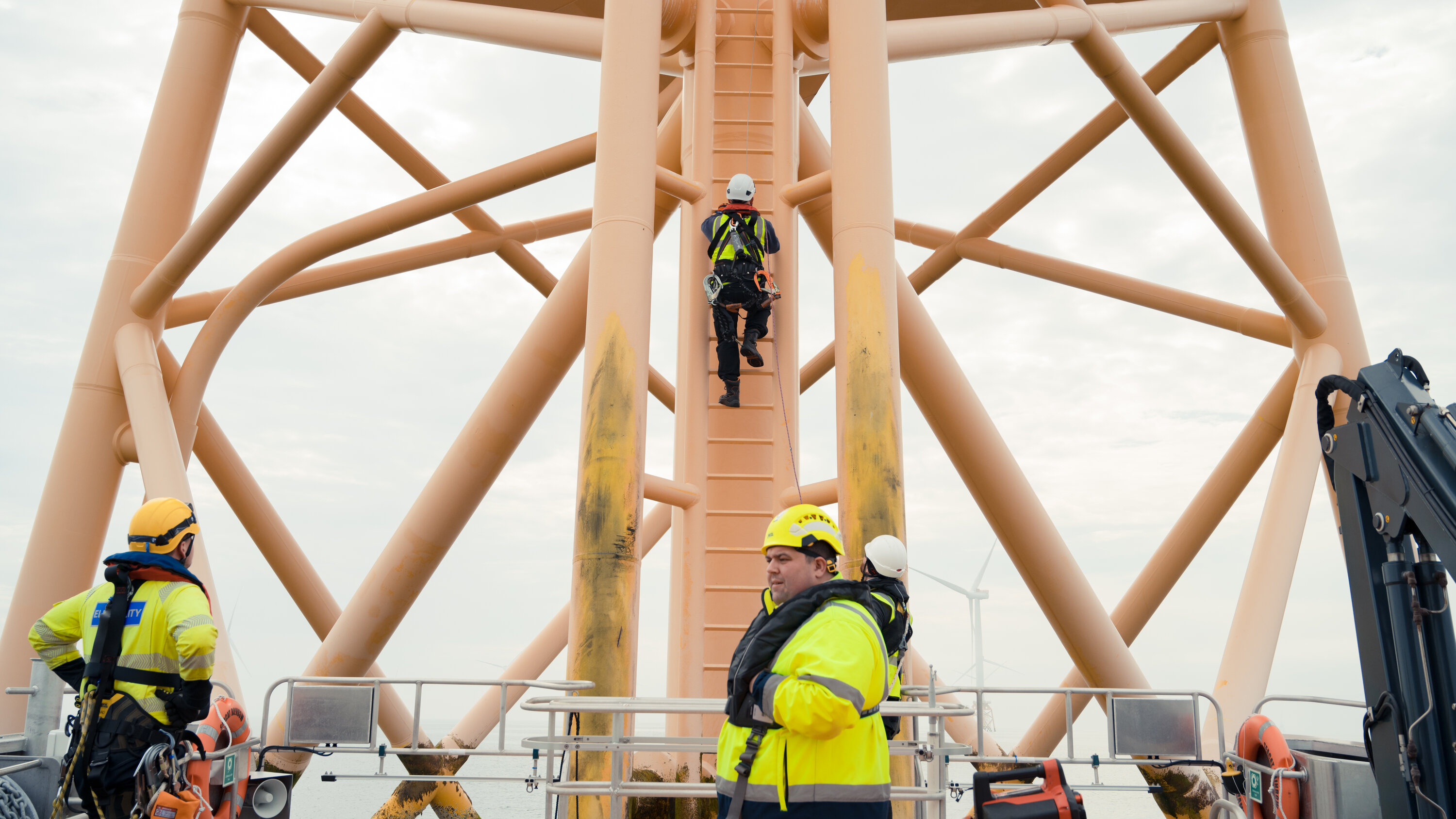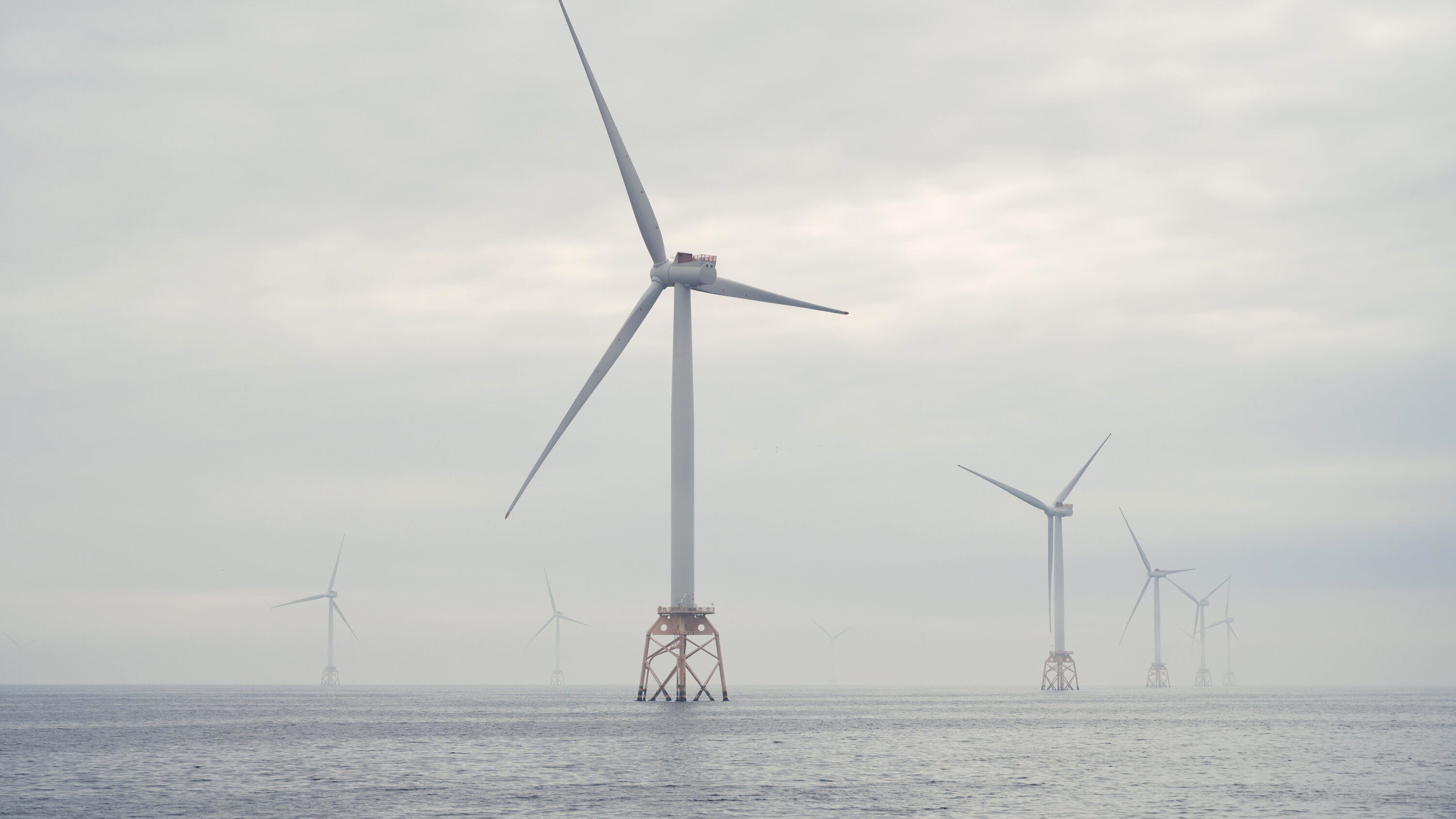
The pilot of the nearly 80-foot work boat gunned its powerful engines, pinning the bow against the base of a towering wind turbine in the smooth North Sea. Three men in yellow and orange outfits steppedonto metal rungs and started slowly scaling the nearly 300-foot structure, past the huge blades that help send electricity to Scotland.
It was a regular workday for these employees and contractors of a Scottish utility, SSE, and its partners, which operate the vast Beatrice wind farm off the northern tip of Great Britain.
Their job is to go from turbine to turbine — Beatrice has 84 arrayed over 50 square miles of blue water — performing maintenance of the powerful machines. Teams can usually service two or three in a day.
It’s grueling work — up to 12 hours a day on the water — but it has its rewards. David Larter, one of the men who climbed the tower, showed a video he had made on his phone while eating lunch one day from a perch high above the North Sea: a minke whale, gently rolling through the water below the tower. “We were quite lucky that day,” he said.
Like other people around Wick, a former fishing port where the wind farm’s operations are based, Mr. Larter also considers himself fortunate to have signed onto a business that is growing as Europe seeks to replace oil and gas, whose production has been a mainstay of this part of Scotland, with cleaner energy.
“This industry is the future, isn’t it,” he said.

Jobs at the wind farm can require up to 12 hours a day on the water.

Skills from oil and gas fields are also valued on wind farms.
Across the globe, governments and developers are pouring hundreds of billions of dollars into large offshore wind farms like Beatrice to meet climate-change goals.
These initiatives are attractive to investors and lawmakers because they produce enormous amounts of clean energy and can be placed far enough from shore that they are largely out of sight. Britain is already generating more than 10 percent of its electricity from wind at sea, and on same gusty days, like Nov. 2, wind produces more than half. As energy security becomes a critical issue in wake of Russia’s war in Ukraine, the country aspires to nearly quadruple offshore capacity over the next decade.
Around the Moray Firth, a triangular notch of the North Sea off Wick, there is abundant evidence of cleaner energy replacing fossil fuels. The Beatrice wind farm takes its name from a nearby offshore oil field that was depleted and will be gradually dismantled. (The oil field was named for a wife of T. Boone Pickens, the American oilman, whose company developed Beatrice.)
Just to the southwest is another port, Nigg, where Global Energy Group recently spent 120 million pounds (about $137 million) beefing up the docks so it can load the enormous components for offshore wind turbines onto ships.
Although tight supplies of natural gas have caused electricity bills to soar over the past year, skepticism about the future of fossil fuels remains strong in Britain and much of Europe, and the numbers tell a story of decline. After reaching a peak in 2014, investment in oil and gas in Britain plummeted by about three-quarters to around £3.7 billion last year, according to Offshore Energies UK, an industry group. Jobs supported by the business have fallen by more than half over roughly a decade, to around 200,000.
Offshore wind farms like Beatrice are making up some of the difference. Investments in these facilities last year was £6.7 billion, roughly double those for oil and gas. Even as companies that make turbines are experiencing financial pain because of supply chain bottlenecks, the offshore wind industry is booming. Jobs in building and maintaining offshore wind farms, and at their suppliers, increased about 16 percent last year to 31,000, with about a third of them in Scotland, according to the Offshore Wind Industry Council.
The marine wind industry, while growing fast, is still in its infancy, and produces only a small fraction of the energy content of the oil and gas extracted from the British North Sea. And because of the greater ability to automate the operation of maritime facilities, it is uncertain if they will fully replace the declining number of jobs in oil and gas.
Still, the changes underway in this region of Scotland could mean there is still a future for the people who work in oil and gas and the communities that depend on it.
Many people who honed their skills on the offshore oil platforms that dot the waters off Scotland find it relatively easily to switch to the wind industry. “What we have got is a very ambidextrous community that will turn their hand to anything that needs doing,” said Willie Watt, a retired oil services executive and former chairman of the Wick Harbour Authority board.
Among those who made the switch is Alan Paul, a Wick native who spent 28 years in the oil business and now manages Beatrice’s control room at the harbor’s edge. It is where technicians monitor activities out at the turbines, using cameras mounted on equipment and checking the giant machines’ performance on screens.
Eight of the nine operators have backgrounds in petroleum, Mr. Paul, 54, said. (Beatrice supports about 70 jobs, while around 1,400 people at SSE, the parent company, work in wind energy.)
“The skills are very, very transferable,” he said.
Part of what drew Mr. Paul to wind was a desire to escape the need to spend weeks away from home, missing weddings and holidays. He said those strains, part of an offshore worker’s life, had contributed to the collapse of his first marriage. He has since remarried.
“It meant I could have my own home every night,” he said of joining Beatrice in 2017.
Completed in 2019, Beatrice’s turbines can churn out enough electricity to power more than 400,000 homes, the equivalent of about one-sixth of Scotland’s total.

Beatrice’s operating profit last fiscal year was 218 million pounds.CreditCredit…Francesca Jones for The New York Times
Beatrice also makes a load of money. In the year that ended on March 31, it recorded an operating profit of £218 million on total revenues of £393 million — or about £1 of operating profit for every £2 of revenue.
The presence of such an outsize business has been a boon to Wick, a town of about 7,000 people whose heyday was more than a century ago, when small fishing craft blanketed its port. Beatrice has paid to clean up the harbor area, including £20 million to renovate two stone buildings to use for the control center and building docks for the boats that go out to the farm. Beatrice’s owners have also provided £6 million for local improvements like new lights around the harbor and wheelchairs for a beach.
“It’s really been quite a boost in terms of regeneration in the whole town,” said Raymond Bremner, the leader of the local Highland Council.
Beatrice, which cost £2.5 billion to build, was Scotland’s first monster wind farm, and it helped open the way for even larger installations, some of them budgeted to cost four times as much, or more.
At Nigg, cranes are loading yellow-painted turbine stands, called jackets, onto ships. (These stands were not made in Britain, but in China and other locations; British companies say they would like to make these parts locally but will need to become more competitive on costs.) The equipment is destined for Seagreen, a £3 billion wind farm being built by SSE and TotalEnergies, the French giant. It will have nearly twice the generating capacity of Beatrice.
In an interview, Alistair Phillips-Davies, SSE’s chief executive, said that as they completed wind farms the company’s development teams moved on to the next ones. “It is a good business for us — yeah, we are making good returns,” he said.
Britain’s recently announced 45 percent windfall tax aimed at clawing back profits from soaring electricity prices isn’t likely to affect Beatrice because, like many recently built wind farms, it operates under a subsidy scheme that already caps revenues.
But Mr. Phillips-Davies told the BBC recently that the tax would reduce the funds that SSE had available to invest and that the government should take care not to undermine Britain’s wind boom.
“We spent a decade-plus building one of the best places to invest in green energy, and we need to make sure we keep it that way,” he said.
Despite the tax, the offshore wind industry seems destined to grow rapidly to meet the demands created by the government’s plans to replace gasoline- and diesel-powered cars with electric models, and natural gas heating with electric or hydrogen appliances.
The Crown Estate Scotland, for instance, awarded swaths of seabed covering 2,700 square miles for wind leases this year to a variety of companies, including SSE, BP and Shell. Analysts estimate that total investment in these projects, collectively known as Scotwind, could exceed $100 billion.
BP alone anticipates that its plans for offshore wind may support around 300 jobs at the company, helping it maintain a sizable presence in Scotland, where it now has about 900 employees. Richard Haydock, an oil industry veteran who now heads BP’s Scotwind program, said about half of new hires for wind would come from jobs in fossil fuel. Maintaining the large wind farm that the company plans to build will require staffing “fairly comparable” to an offshore oil field, he said.
But the cozy, stay-at-home atmosphere that drew Mr. Paul to Beatrice may not always be possible for people working on some of the next wind farms, which will be much farther out to sea.
Technicians will probably live on vessels stationed at the wind farms for two weeks and then swap with fresh teams. “It will be very similar to the pattern and lifestyle” of workers on offshore drilling rigs, Mr. Haydock said.